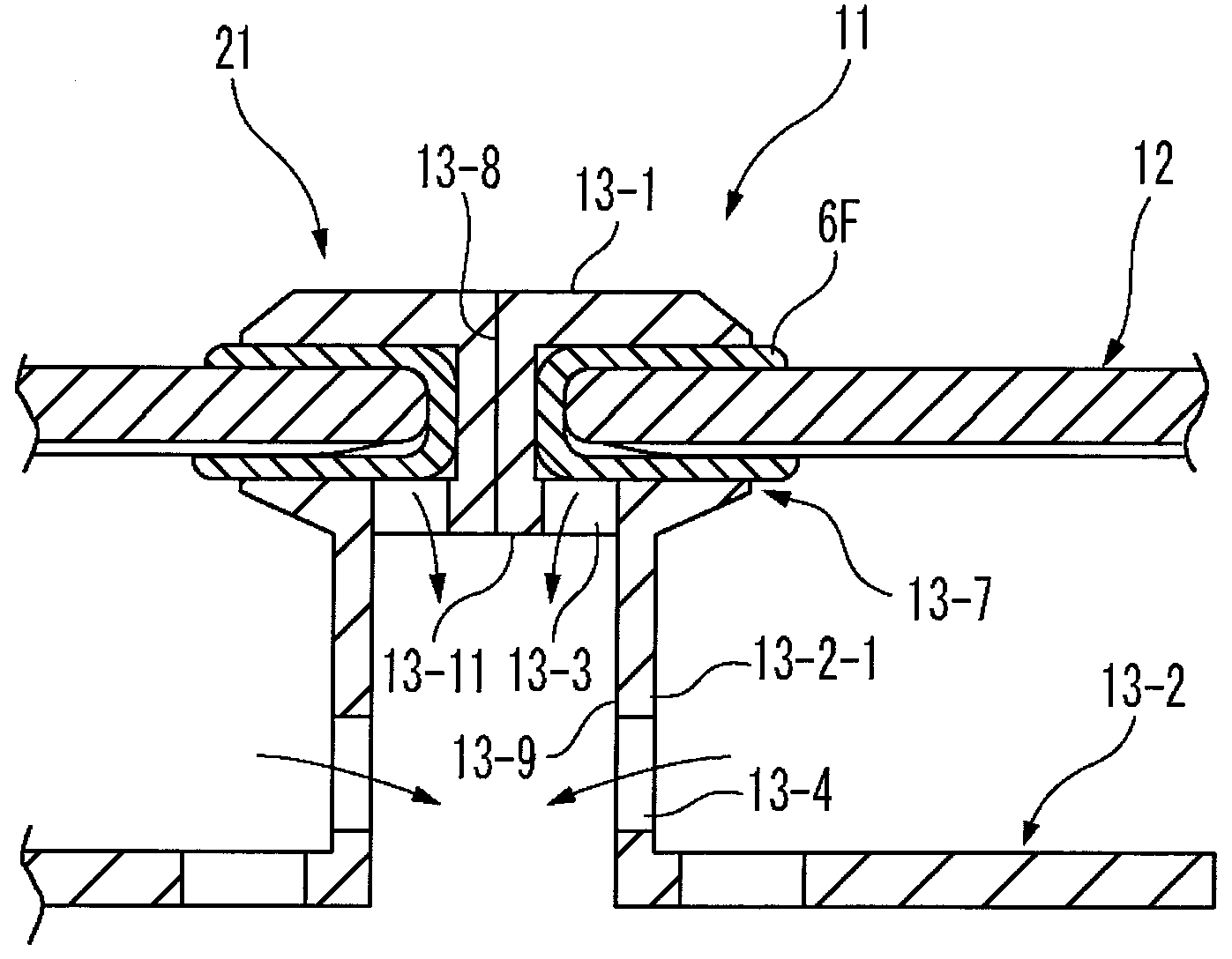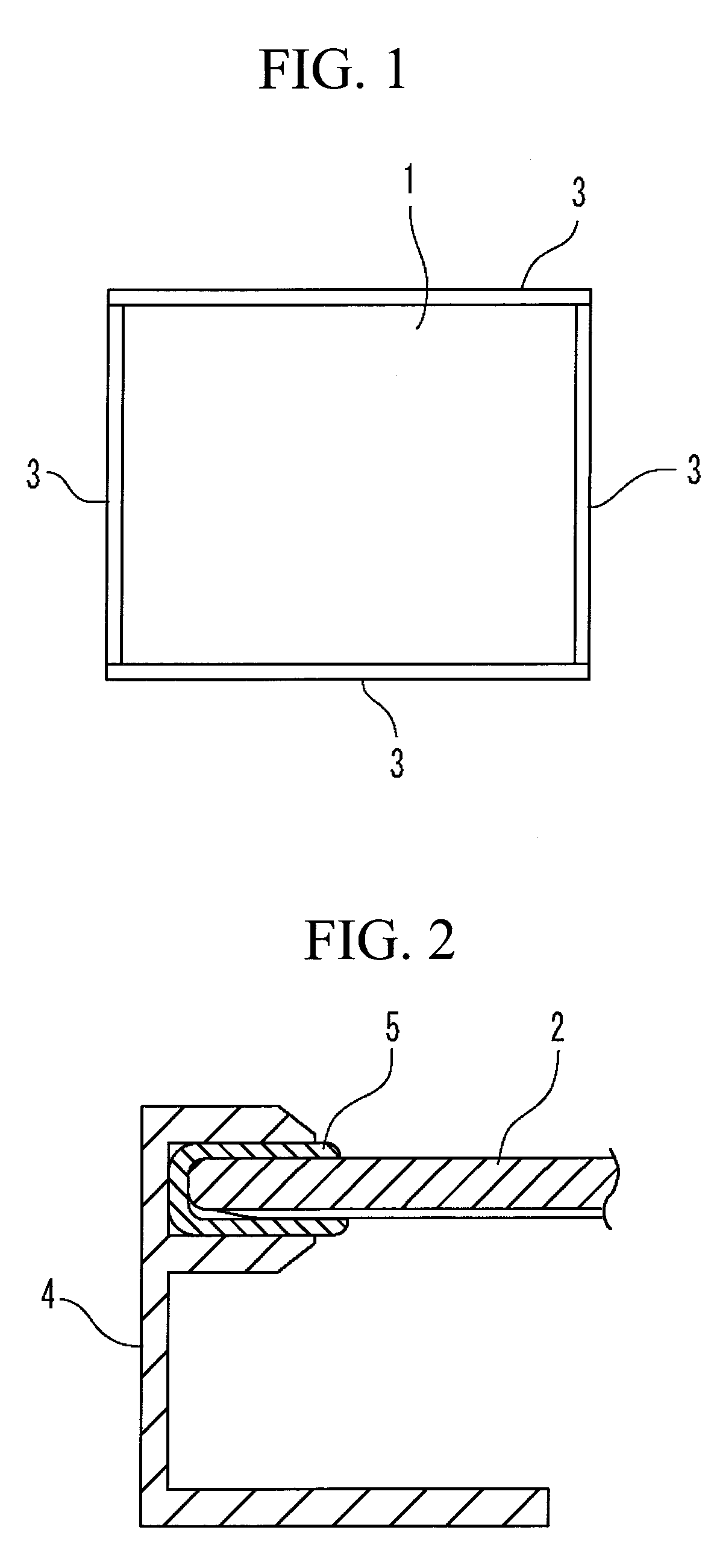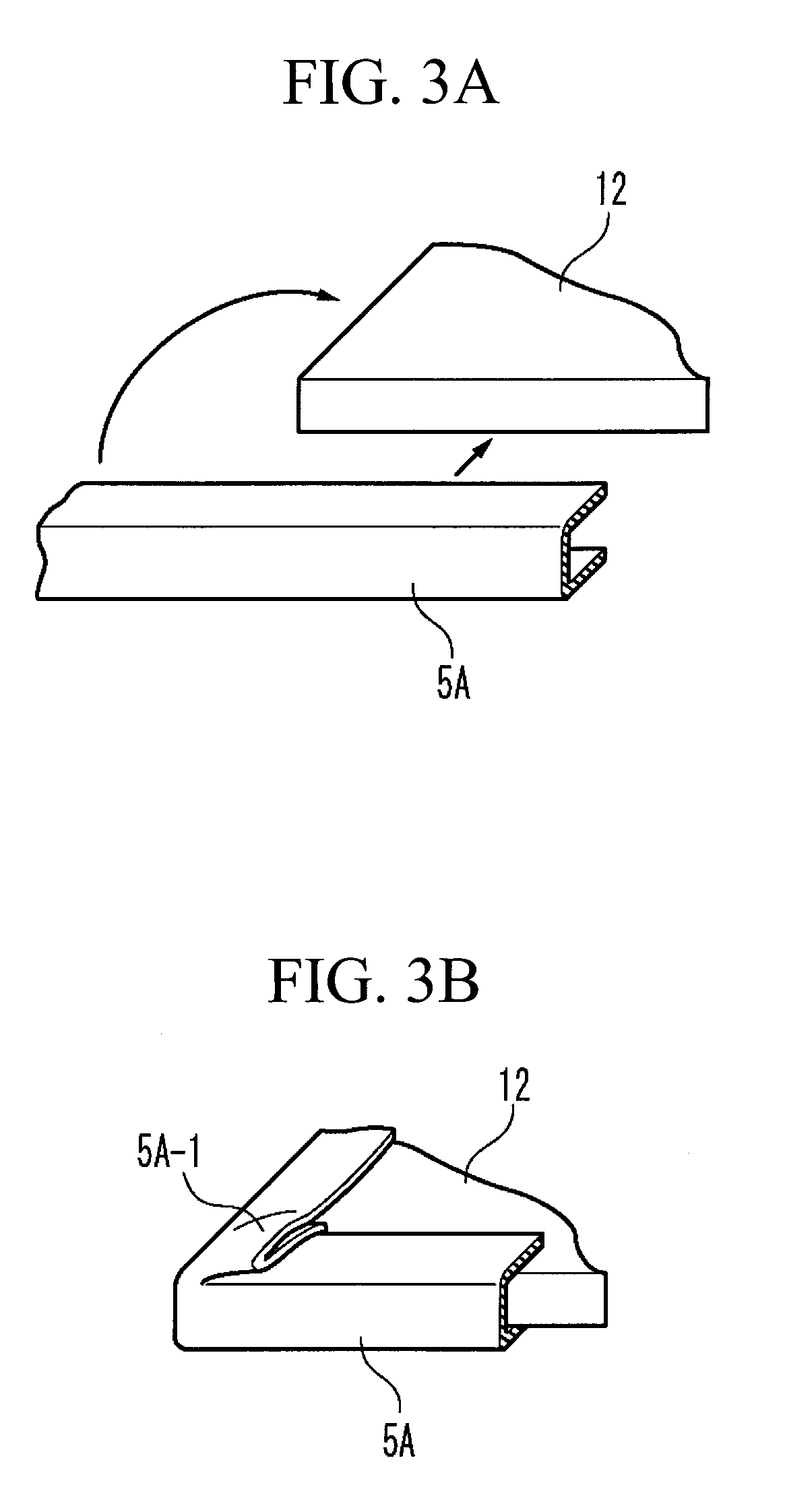Solar panel
a solar panel and solar panel technology, applied in the field of solar panels, can solve the problems of affecting the operation of solar cells, affecting the safety of solar cells, and the difference in thermal expansion between glass and aluminum, and achieve the effect of simple structure and easy manufacturing
- Summary
- Abstract
- Description
- Claims
- Application Information
AI Technical Summary
Benefits of technology
Problems solved by technology
Method used
Image
Examples
first embodiment
[0069]FIGS. 3A and 3B are perspective views each showing one example in which a substantially U-shaped gasket 5A is fitted at the periphery of a rectangular plate-like solar cell module body 12. Surrounding the entire periphery of the solar cell module body 12 with one gasket 5A as shown in FIG. 3A results in formation of a portion 5A-1 folded at a corner part as shown in FIG. 3B, making it difficult to assemble it into a frame structure. FIGS. 4A and 4B are perspective views each showing one example in which substantially U-shaped gaskets 5B are fitted to the periphery of the rectangular plate-like solar cell module body 12. If the four gaskets 5B are separately fitted to four sides of the solar cell module body 12 as shown in FIG. 4A, the gaskets make contact with each other only at a point 5B-1 of a corner part as shown in FIG. 4B, which is not sufficient to prevent water entry into the solar cell module body.
[0070]FIGS. 5A and 5B are perspective views each showing one example in...
second embodiment
[0074]Next, a solar panel according to a second embodiment of the present invention will be described. FIGS. 7A and 7B are sectional views showing conditions before and after a gasket 5C and the solar cell module body 12 are fitted with each other. FIG. 7A shows the condition before the fitting and FIG. 7B shows the condition after the fitting. As shown in FIG. 7A, the cross section of the gasket 5C is substantially U-shaped. As shown in FIG. 7B, when the solar cell module body 12 is fitted with the gasket 5C, the leading end of the gasket 5C turns up, so that water entry into the solar cell module body 12 may be permitted.
[0075]FIGS. 8A and 8B are sectional views showing conditions before and after a gasket and the solar cell module body are fitted with each other in the second embodiment of the present invention. In the present invention, as shown in FIG. 8A, a projection part 6-4 is formed at the end part of each of an upper side part 6-1 and lower side part 6-2 of the gasket 6C ...
third embodiment
[0076]Next, a solar panel according to a third embodiment of the present invention will be described. FIGS. 9A and 9B are sectional views showing conditions in which the gasket and the solar cell module body are fitted with each other. As shown in FIG. 9A, a space, although small, may be formed between the gasket 5D and the solar cell module body 12. In this space, moisture 10 possibly enters, although in a small amount, due to a capillarity phenomenon, dew condensation, or the like. Therefore, in the present invention, as shown in FIG. 9B, holes 6-5 are provided in a gasket 6D so that the moisture can be discharged as shown by arrows in the figure. In this case, the moisture entering the inside is small in amount and held in the small gap between the gasket 6D and the solar cell module body 12 due to surface tension or a capillarity phenomenon. Therefore, such moisture discharge is achieved mainly by vaporization. Thus, it is preferable that the holes 6-5 of the gasket 6D is large ...
PUM
| Property | Measurement | Unit |
|---|---|---|
| size | aaaaa | aaaaa |
| angle | aaaaa | aaaaa |
| vertex angle | aaaaa | aaaaa |
Abstract
Description
Claims
Application Information
 Login to View More
Login to View More - R&D
- Intellectual Property
- Life Sciences
- Materials
- Tech Scout
- Unparalleled Data Quality
- Higher Quality Content
- 60% Fewer Hallucinations
Browse by: Latest US Patents, China's latest patents, Technical Efficacy Thesaurus, Application Domain, Technology Topic, Popular Technical Reports.
© 2025 PatSnap. All rights reserved.Legal|Privacy policy|Modern Slavery Act Transparency Statement|Sitemap|About US| Contact US: help@patsnap.com



